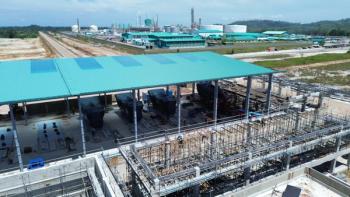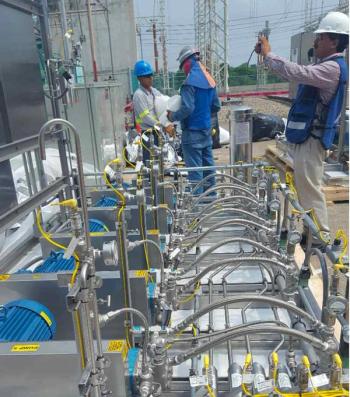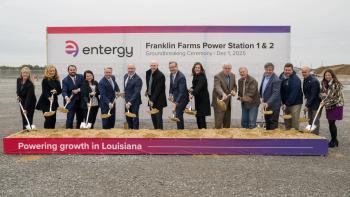
Short- And Long-Term GT Validation
Over the last few decades, gas turbine (GT) technology has evolved in pursuit of greater efficiency and increased flexibility. Such objectives impose higher operating temperatures, larger pressure ratios and faster ramp rates. Tougher operating conditions place increased stresses on components, adversely affecting their durability. In addition, longer operating intervals between scheduled inspections raise the risk of component deterioration and failure as well as potential secondary damage.
Detection of potential issues, therefore, is the key to enhancing the reliability of new or modified GTs prior to going commercial. This verification process can be divided into the first couple of hundred hours or shortterm validation and the subsequent thousands of hours or long-term validation.
Short-term validation allows characterization of the compressor, its surge and rotating stall behavior, as well as the evaluation of GT behavior during off-frequency operating conditions. It also allows discovery of unexpected issues that might arise during the first few hours of operation, such as vibration, rubbing and high temperatures.
Positive results from short-term validation represent a green light for the initiation of a long-term validation program where the time and temperature effects on durability, reliability and performance can be evaluated. Once the generator breaker is closed and the GT is dispatching power, the RPM of the GT-generator train is determined by the frequency of the grid. This is the condition the plant will run during its future life and is the appropriate venue for detecting and correcting long-term issues or failures prior to commercial deployment.
Component lifecycle
It is important to differentiate the various factors impacting the GT component lifecycle. Low cycle fatigue, erosion, corrosion and fretting are among time and start-stop dependent phenomena, while creep and aging of Thermal Barrier Coatings (TBCs) are among those phenomena that depend on time and temperature.
These effects are difficult to estimate based on a few hundred hours of operation. They require validation at least one or two orders of magnitude greater, and it is the primary motivation for some members of the insurance community to use 8,000 actual operating hours to classify the technology proven as compared to prototypical.
Long-term effects are important for the reliable and durable operation of the equipment. They are commonly mentioned in Root Cause Analysis (RCA) reports on component failures and must therefore be detected and corrected prior to commercial introduction.
On the other hand, off-the-grid, shorter-term tests allow gas turbine-generator operation at rotating speeds different from synchronous speeds for off-frequency verification. However, the range of RPMs is typically restricted by blade frequency excitation concerns.
The operating ranges are defined by the analysis of Campbell Diagrams that clearly identify harmonics. Protective control systems typically restrict the rotating speed of the GT by implementing routines that will open the breaker or trip the unit when a preset frequency range and timers are exceeded to prevent sustained operation at high risk RPMs. These protective routines are evaluated during off-the-grid tests.
Marsh & McLennan’s “Common Causes of Large Losses in the Global Power Industry” report refers to testing new designs ideally replicating the likely operating and demand conditions, which is an extremely expensive process. In other words, off-frequency tests must be followed by verification of the turbine for an extended period connected to the grid and under very different commercial dispatching conditions.
Based on claim records presented by the insurance community during the “42nd Annual Conference of the International Association of Engineering Insurers”, many failures develop after prolonged operation and are influenced by numerous contributing factors. Detection of these issues and the subsequent introduction of design enhancements involve iteration, and explain the initial lower reliability of prototypes prior to long-term validation.
Therefore, prolonged validation can best take place when a continuous revenue stream is in place that allows sustained operation. In addition to supplying revenue, a validation plant replicates the foundation and supports of commercial units, allowing verification of rotor-bearing behavior.
But there is no doubt that short-term testing has value, especially in areas such as blade tip rubbing and vibration. For example, startup and shut-down sequences impose uneven heating or cooling of moving and stationary components that can temporarily close the clearance and induce blade tip rubs.
This becomes more noticeable in high efficiency designs that target tight clearances. This risk can be mitigated by clearance control techniques, but the initial runs during short-term validation can unfold design estimation errors.
Vibration and blade tip rubbing can also occur if the rotor-bearing-system design is prone to excitations. This could be detected during short-term testing provided that the test stand replicates the GT and drivenequipment support and foundation design to be used in commercial applications. Another advantage of short-term validation is the detection of excitation issues that would occur at off-frequency conditions.
But there are certain failure mechanisms that are linked to operational time or cycles, or time and temperature, such as low cycle or thermal fatigue, corrosion, erosion, creep and high-temperature oxidation. Long-term validation is the most realistic way to detect these complex stress exposures. A grid-connected GT is subjected to the varying loads temperatures, demand oscillations, start and stops experienced by plant operators in the field.
Low Cycle Fatigue (LCF), for example, can be exacerbated by the rapid starts and stops that today’s turbines are subjected to. LCF and thermal fatigue are frequently mentioned in GT component’s RCAs as probable contributors in failure investigations.
Loss of protective coatings on compressor blades does not happen instantaneously and operating time must be allowed to see if it develops.
Failure mechanism analysis of components is another challenging arena due to exposure to complex and varying stress loads that can make identification and prediction of failures inaccurate. Compressor components can be subject to unstable aerodynamic loading, as well as environmental effects, such as erosion or pitting.
The turbine section is also exposed to high temperatures, fuel contaminants and other effects. These conditions tend to be cumulative and are hard to detect until a machine has undergone sufficient hours of operation.
Gas turbine output and efficiency are drastically affected by compressor fouling and seal aging or deterioration. A turbine’s “new and clean” performance progressively deteriorates as it accumulates hours and starts-and-stop cycles.
This effect can be estimated with relatively high certainty through short-term validation. But there are also secondary effects which are much trickier to predict in this way, such as emission drifts, combustion dynamics and flash backs that can result in forced outage or damage of certain components.
Insurance input
The insurance community has an enormous wealth of knowledge about gas turbine failures and RCAs as shown in the summaries of common failures in Table 1 and Table 2.
In addition to gas turbine characterization during off-frequency operation, the validation process must be able to detect different types of failures at the prototype stage, either during short- or long-term validation. Once an issue is identified and a countermeasure implemented, further validation of the redesigned components is needed to prevent recurrence prior to commercial introduction.
Table 1: Summary of frequent failures associated with design deficiencies[/caption]
Table 1 lists common insurance claims that are associated with design deficiencies. Failure 1 constitutes a clear example of failures that could be detected during short-term validation. Failures 2, 3, 6, 7 and 10 could happen during either short or long term validation. It is worth mentioning that 6 and 7 could be a non-issue until certain ambient conditions, fuel composition or performance deterioration degrades to the point where combustion instabilities are triggered. Failure 3 could be separated into two different scenarios with two different trigging mechanisms. Stalling and surge could happen early if the design and the surge margin are marginal but their occurrence is also affected by long-term compressor fouling. Erosion and scale deposits are typically developed during long-term operation. Failures 4, 5, 8, 9 and 11 can mainly be detected during long-term validation.
Table 2: Summary of frequent failures associated with duty cycle[/caption]
For Table 2, foreign object damage (FOD) can be detected soon after starting short-term validation, with the exception of an uncommon case that the foreign object is held in position until released. Failures 2, 3, 4, 6 and 11 can mainly be detected during long-term validation while 5, 7, 8, 9, 10 and 12 could happen during either short- or longterm testing. Failure 10 could happen in short-term, though, if the cooling passages were clogged during manufacturing of the failed component, but it will typically correspond to long-term validation results in cases where the clogging is induced by dust or rust, unless poor system cleaning has been applied during commissioning.
It can be seen that short-term validation allows detection of issues not physically associated with prolonged exposure to cycling and temperature. It is also effective in evaluating off-frequency behavior. It has its place in readying a gas turbine design or modification for commercial operation.
But it should be supported by long-term validation. Insurance data based on common GT claims indicates that some failure mechanisms can only be detected by subjecting turbomachinery to sustained operation for many thousands of hours.
Written by: Carlos Koeneke; VP Project Engineering, Mitsubishi Hitachi Power Systems Americas
Newsletter
Power your knowledge with the latest in turbine technology, engineering advances, and energy solutions—subscribe to Turbomachinery International today.





